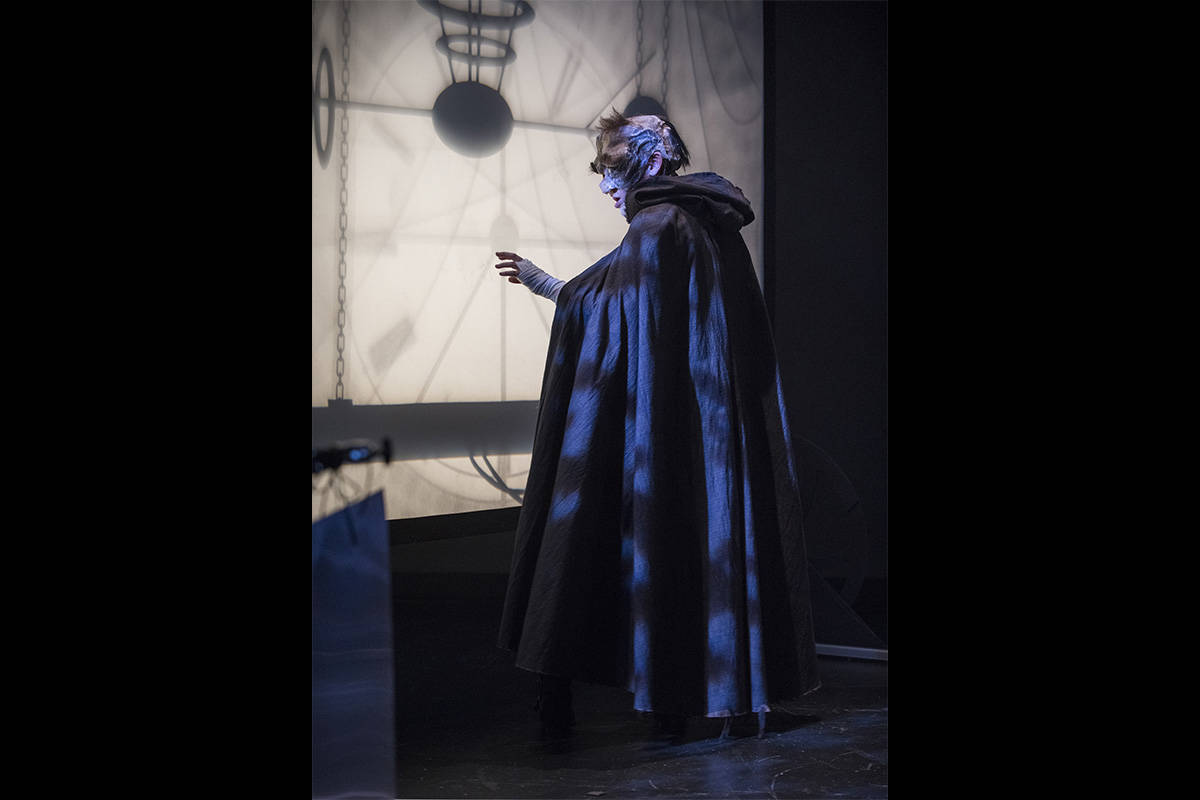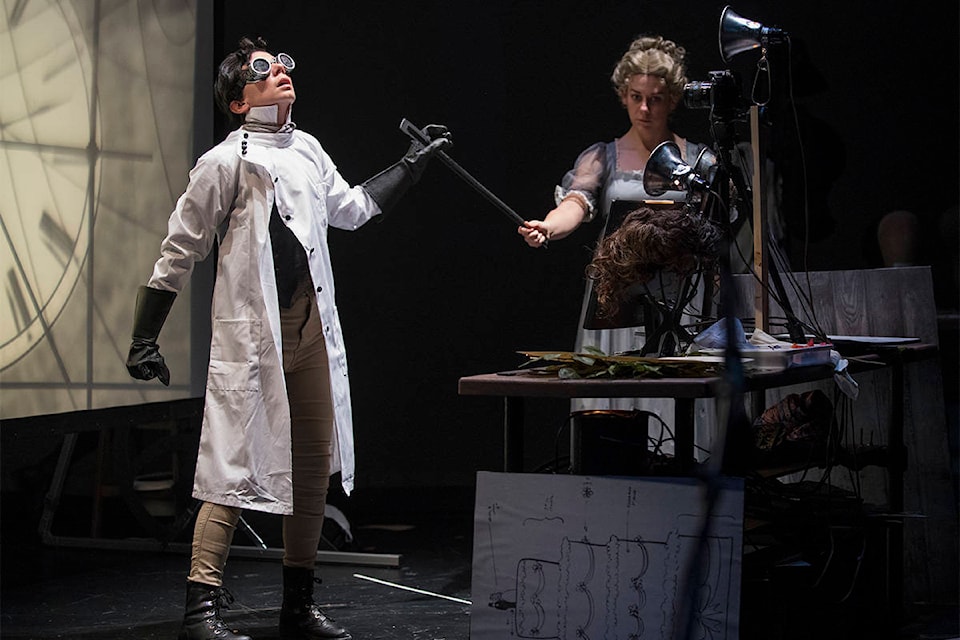It’s a fresh take on a classic monster of a story, one that’s inspired dozens of creative iterations in the more than two centuries since it first staggered onto the literary — and later, cinematic — scene.
Chicago’s Manual Cinema is bring its take on Frankenstein to Whitehorse’s Yukon Arts Centre, and with the human cast also comes puppets, cameras, screens, overhead projectors and robotic percussionists.
The Emmy-Award-winning performance collective delivers something far beyond your conventional theatre experience. In the case of Frankenstein, there are actors on stage, yes, but the story is also told in shadow (actors go behind a back-lit screen), puppets, and “silent film,” with cameras capturing and broadcasting live shots of the actors and puppets.
There’s very little dialogue, although there is a live band along with with the robotic percussionists, a very tightly-timed affair.
“The experience of seeing the show is like seeing a movie made live in front of you,” explained co-artistic director Sarah Fornace, who’s also a puppeteer and actor.
“… Usually what I tell people is that there’s no wrong way to watch show, so if you just want to watch the big screen like it’s a movie, that’s perfect, if you want to watch the big screen and glance down and look at the puppeteers sometimes, the musicians sometimes, like, that’s also perfect.
“Everyone in the audience will have a slightly different experience of the show depending on you know what they choose to look at at any moment.”
Besides telling the familiar, sordid tale of mad scientist Victor Frankenstein and his doomed, monstrous creation, Manual Cinema’s production also takes a step back to look at the woman behind the story itself — Mary Shelley, who penned the original novel back in 1818.
The show begins and ends with Shelly, focusing in on when she published the second edition of Frankenstein and had to fight to prove that she had, in fact, written it; her name did not appear on the original run.
Shelly was also dealing with a number of personal issues, including the loss of a baby and the death of her own mother, who was also a writer and women’s rights advocate and died shortly after Shelley was born.
“It was very important for us to kind of foreground Mary Shelley and for us to have an all-female puppeteer cast to try and capture some of the female voice that’s kind of embedded in the novel,” Fornace said, noting that there are actually very few female characters in the story itself.
“And you know, Mary Shelley also invented science-fiction as a genre and really never got credit for it like until pretty recently so it was really important for us to put her literally on stage.”
Manual Cinema has also made a few other tweaks to Frankenstein besides stitching in Shelley’s story. The overall plot, Fornace said, had to be trimmed in some spots so the show wouldn’t be “like 10 hours long,” considering that the novel is “so rich” in language but Manual Cinema is primarily telling the story without words. Hommages to the other cinematic works inspired by Frankenstein, from silent films and 1930s monster flicks to more contemporary adaptations, are also sprinkled throughout.
“It has this really rich cinematic tradition and we are trying to be part of that too,” Fornace said, adding that despite the well-trodden ground, Frankenstein was still appealing material for Manual Cinema.
“One of the interesting things is that Frankenstein’s monster in the book, it’s so articulate … but in the best-known film, the monster is a silent character, almost like a silent film character kind of dropped into a talkie film, and as we are people who make, like, silent movies, we work without words and without dialogue, it was a very exciting character to us,” she explained.
Some elements of the story also still feel relevant today, Fornace said. There’s the sense of abandonment the monster feels, and how people lash out at and fear him based solely on how he looks, despite him being a sensitive and kind soul. There’s also Frankenstein himself, a brilliant scientist who gets caught up in creating something just because he can, and without thinking about the responsibilities and consequences that would come with it.
The show will be Manual Cinema’s first visit to the Yukon, something Fornance said the cast and crew are thrilled about. That’s in part, she said, because while the show doesn’t touch upon the novel’s original opening, with a ship’s captain writing about finding a nearly frozen, starved Frankenstein while sailing in the Arctic, it does end in the Arctic, just like the book.
“We’re so excited to bring it up to the North,” Fornance said.
Manual Cinema’s Frankenstein will be at the Yukon Arts Centre March 12. Tickets are available in-person, over the phone at 867-667-8574 or online at yukontickets.com
Contact Jackie Hong at jackie.hong@yukon-news.com

